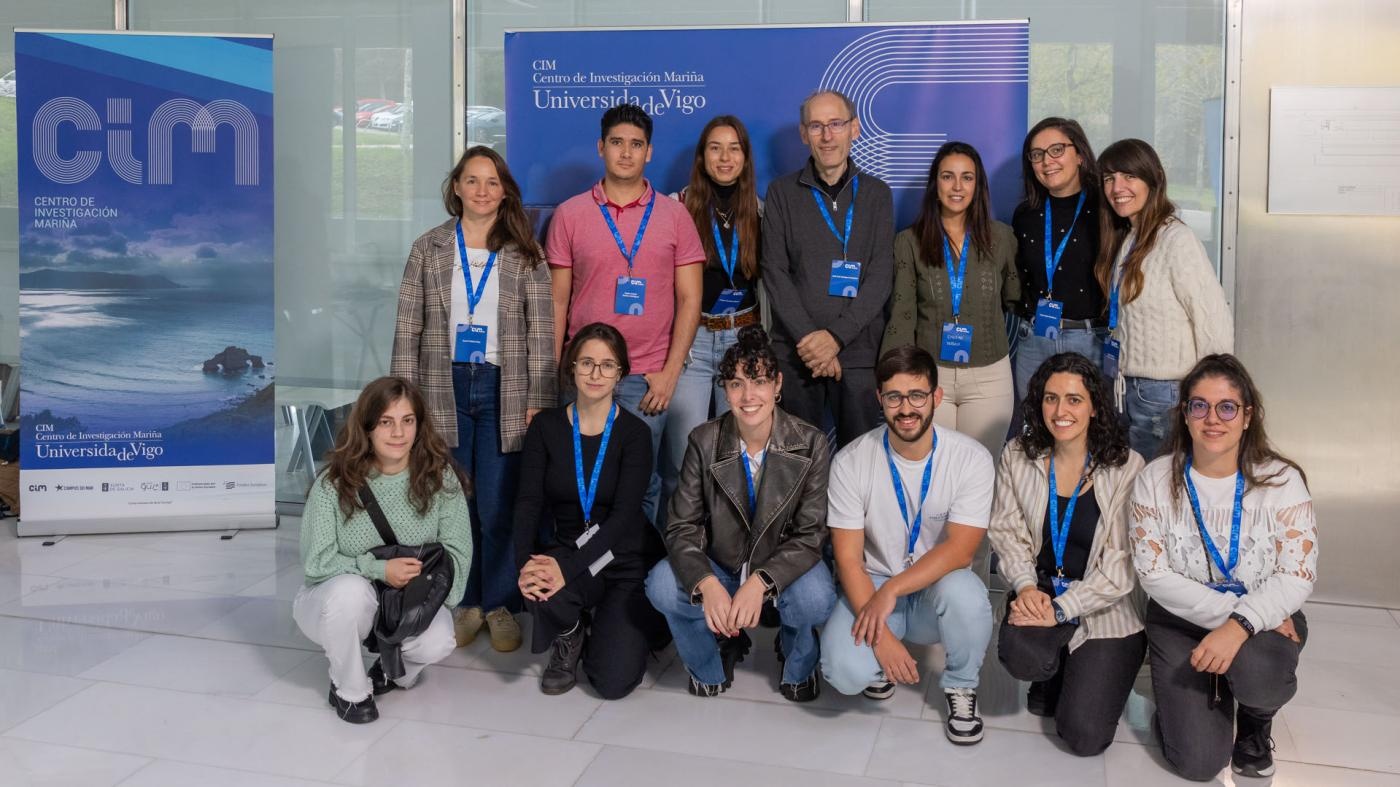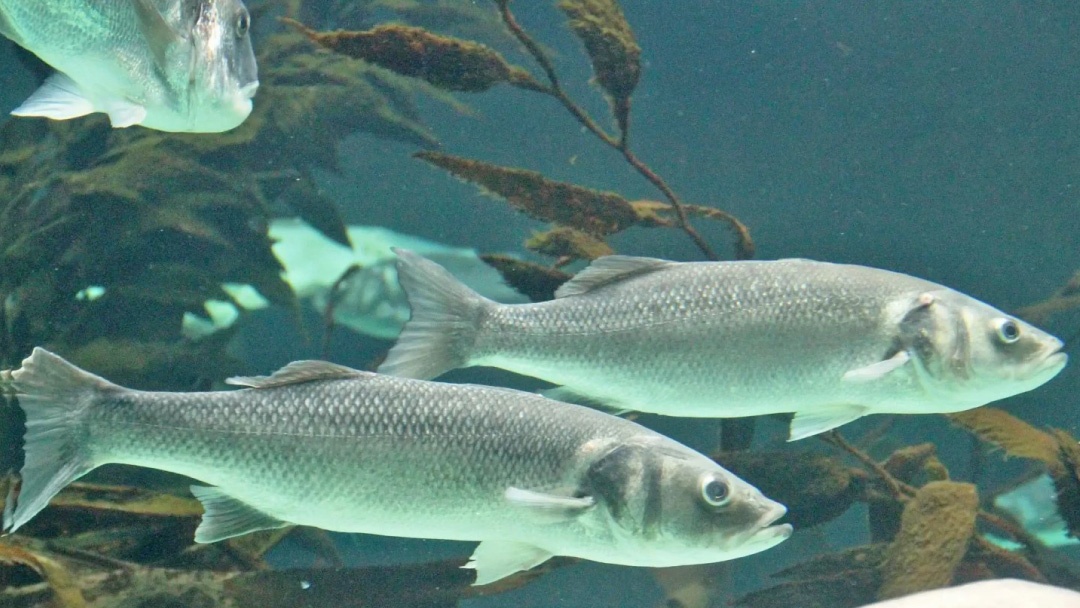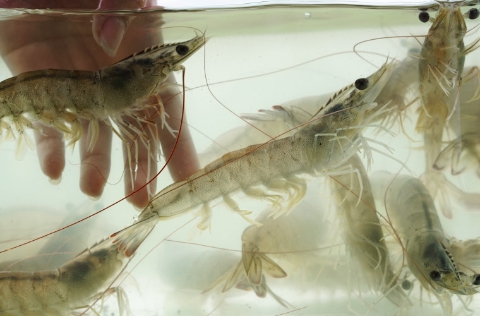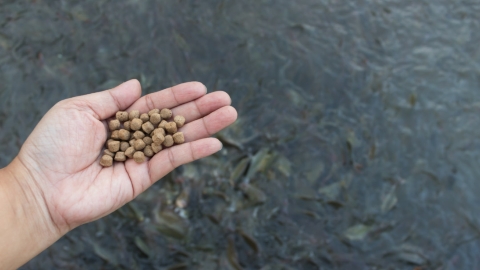 Researchers AlFunFeed project
Researchers AlFunFeed project
A pioneering European research project, coordinated by the Marine Research Centre (CIM) at the University of Vigo, aims to revolutionise aquaculture feed production by introducing sustainable, fungi-based proteins derived from seaweed waste.
The initiative, known as AlFunFeed, is led by the univerty’s Physiology of Fish group (PhysToFish), under the direction of Professor José Luis Soengas. It has been awared €1.23 million in funding thorough the highly competitive Sustainable Blue Economy Partnership – part of the European Union’s Horizon Europe programme focused on advancing the sustainable blue economy. Notably, AlFunFeed is the only Spanish-led proposal selected in the programme’s Blue Bio Resources strand.
“At the heart of aquaculture, one of the main challenges is the sustainability of feed ingredients,” explains Soengas. “Our project starts from an innovative idea: to use seaweed waste-usually discarded-as a substrate to grow filamentous fungi and extract single-cell protein. This protein will then be evaluated as an alternative fish feed ingredient.”
Unlike traditional plant-based proteins such as soy-which are associated with large-scale monoculture and high carbon footprint-the AlFunFeed introduces a novel ingredient with strong sustainability credentials. By using macroalgae residues, the project supports a circular economy model turning waste into high-value nutritional resources.
The research consortium brings together expertise from across Europe. In addition to the University of Vigo, partners include the Galician biotech firm ODS Protein, represented by Iria Valera; the Università Politecnica delle Marche in Italy, led by Ike Olivotto; Portugal’s CIIMAR research centre, through Benjamin Costas; and the University of Thessaly in Greece, under Kostas Komas. The Italian Fishing and Aquaculture Federation (Federpesca), Galicia’s Innovation Agency (GAIN), and the Regional Ministry of the Sea also support the initiative.
The first stage will involve adapting existing fungal fermentation technology to use algae as the primary substrate-a task to be undertaken by ODS Protein. “Once that’s achieved, our role will be to assess whether this new protein meets the nutritional needs of fish,” add Soeangas.
Testing on European sea bass, with broader potential

The initial trials will focus on diets for European sea bass (Dicentrarchus labrax), a commercially important carnivorous species in aquaculture. Researchers will assess the impact of the fungal protein on digestion, microbiota composition, immune response, fish welfare, and overall nutritional value. The long-term ambition is to expand its use to other farmed species such as turbot, gilthead sea bream, and salmon.
In addition to biological metrics, the project will analyse the economic and environmental impacts of introducing this new feed ingredient, in line with the United Nations Decade of Ocean Science for Sustainable Development.
A First in European Aquaculture
“This is the first time these proteins will be proposed for aquaculture using algae as substrate,” says Soengas. “It’s a completely new concept that originated here at CIM and has been selected in a highly competitive European call.”
The SBEP evaluation panel praised the project’s scientific rigour, its cross-sectoral structure, and its potential to reshape protein sourcing in aquaculture. The multidisciplinary team spans academia, industry, civil society, and government agencies, offering a well-rounded platform for innovation.
The project is expected to begin in September 2025 and will run for three years, concluding in August 2028. Funding is pending final approval from national agencies, including Spain’s State Research Agency and Centre for the Development of Industrial Technology (CDTI).
Ultimately, AlFunFeed could reshape the aquaculture industry by introducing a more sustainable and stable protein source, reducing the sector’s reliance on traditional crops and lowering its environmental footprint. By offering a feed ingredient that does not compete with human food production, the project holds promise for boosting resilience across the aquaculture supply chain-from hatcheries to market.



